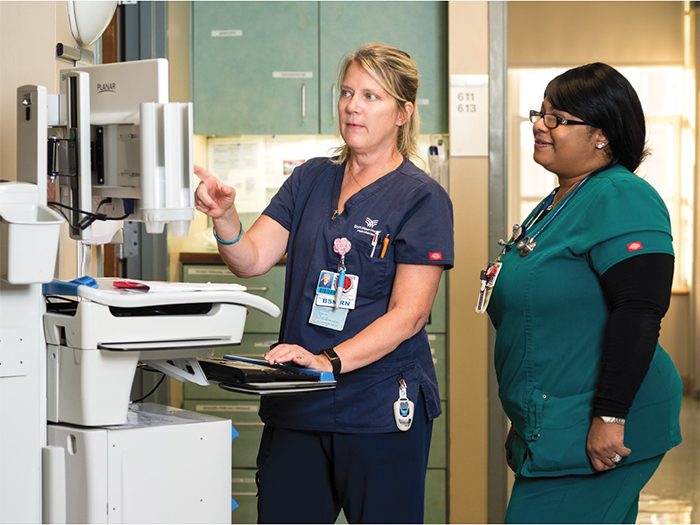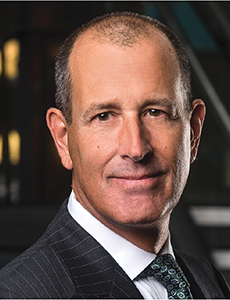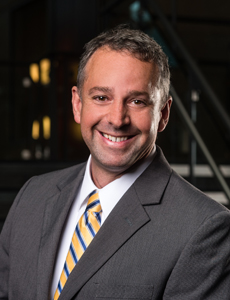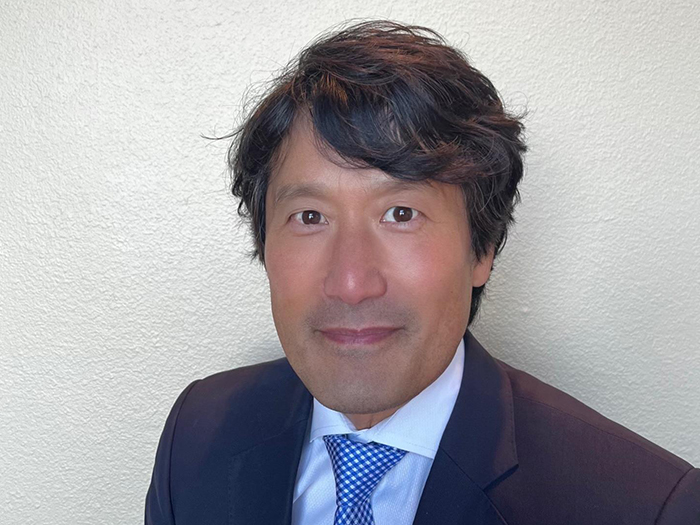How a Sprawling Health System Slashed Injuries by 24 Percent

Soon after Steve Besack joined Main Line Health System’s workers’ compensation program in 2009, the human resources director at one of the suburban Philadelphia system’s hospitals invited him to lunch to discuss a nurse with 30 years’ tenure who had recently fractured her elbow.
“I thought, ‘Oh, no, what did I do wrong?’ ” he said.
Nothing, as it turned out, and neither had the nurse. The nurse was offended though, by the idea that a nurse case manager escorted her to medical appointments as if she couldn’t be trusted to manage alone, said Besack.
“The human resources director said, ‘This is a great employee. Do we want to be the company who treats her like she’s guilty?’ That was the pivotal moment,” Besack said.
Until then, Besack was more familiar with the traditional workers’ compensation model, where companies default to an adversarial position against a presumption of fraudulent claims as an article of faith.
Breaking with the traditional model, he decided the department should be her advocate, not her adversary.
“There was no reason not to trust a nurse with 30 years of outstanding service,” he said. “That switch in culture changed everything.”
The pivot to the claims advocacy model, which operates on a premise of trust in injured workers and a dedication to returning them swiftly to health and work, introduced a period of organizational soul searching and a great deal of number crunching to determine how to make MLH a safer workplace with more engaged employees.
A cascade of changes followed, earning Main Line Health System a 2018 Teddy Award.
These changes include an online reporting system that reduced reporting time by 82 percent, from 17 to three days, often capturing the sweet spot for treatment right after the injury that augurs well for full recovery. In one case, the nurse case manager scheduled treatment within seven minutes of a reported injury.
Culture of Safety
Mike Miller, manager, workers’ compensation and employee safety, focused on getting the best post-injury outcomes for the first several years after joining MLH in 2011. After researching other employers’ workers’ compensation best practices and studying Teddy Award winners’ stories, he concluded that post-loss was only half the problem.
“Doing a great job on loss control wasn’t enough,” Miller said. “We needed to prevent injuries in the first place.”
At the same time he was contemplating a focus on safety, senior management authorized a dedicated safety position: employee safety specialist. This expense wouldn’t have earned the blessing from senior management without quantitative support, said Besack.
“We slice and dice the numbers every which way,” he said, and PMA presents them persuasively in exhaustive stewardship reports that can run upwards of 100 pages. MLH is “very data-driven” in its pursuit of safety, said Caroline Burhenne, regional claims service manager with PMA Management, MLH’s TPA.
“Are there falls in parking lots? Patient handling injuries? Needle sticks? At which facility? What shifts are involved?” she asked. “MLH goes to the incident reports for answers, and we can fix the problem quickly.”
Loss runs, incident reports, managed care savings, medical cost containment savings, liabilities — all those numbers tell the story about where money is going, and all of those numbers, presented to legal counsel and senior management, can earn their blessing for an unconventional, creative project, said Besack.
For example, to prevent injuries from happening in the first place, MLH recruited its own employees to identify workplace safety risks — tripping hazards from cables on floors, overhead objects that can produce head injuries, cracks in parking lots — so they could be resolved.
Employees who identify a hazard can report it. So far, a total of 15 “Employee Safety Messages,” with credit to the employee, have landed in almost 11,000 mailboxes across the organization.
“The recognition is pretty cool,” said Besack.
Although MLH pivoted for the “right reasons,” said Miller — to create a safer workplace and minimize distress and downtime after an injury — the changes produced considerable savings also.
These included, said Besack, a 24 percent reduction in injuries severe enough to report to OSHA, workers’ compensation costs that held steady even as payroll increased 25 percent, a 36 percent decline in litigation and a $30,000 decrease in excess insurance premiums.
A number that particularly animates Besack might be seen as a bad thing at first glance, he said. That number: A 24 percent increase in “record only” cases thanks to enhanced claim reporting practices that capture the “near misses” — those incidents that fall below the severity threshold for OSHA reporting.
“We want to know about the near misses,” he said. “Every record-only case is another opportunity for loss prevention.”
Dear Worker: You Matter
There is a simple message behind the multi-front campaign towards greater employee engagement, trust and safety, said Miller: Employees are valuable. They’re valued before they’re injured, and they’re still valued after an injury.
MLH had its share of back and shoulder injuries from moving patients, said Burhenne. “Employees really are the biggest asset,” she said. “A lot of nurses have been in the industry for a long time, and they understand their jobs. Main Line Health doesn’t want to lose them.”
MLH provides “top-level customer service,” she said, including attentive but tactful nurse case management, fast medical treatment and the best doctors. PMA supports the effort. “They want to come back to work.”
“Caregivers’ primary focus was on patient safety, not their own safety. They didn’t buy it when we said, ‘Your safety is as important.’ To them, patients come first.” – Mike Miller, Manager, Workers’ Compensation and Employee Safety, Main Line Health
Injured employees also have “great messages about how to not get injured again,” said Miller. Those messages are effective in discouraging shortcuts — say, not bothering to use lifts or sliders when moving patients from beds to chairs — which can result in soft tissue injuries.
And repeat injuries, a red flag for offenders under the traditional model, have a lot to offer. When they looked at loss runs, Besack and Miller saw a small population with three or four patient handling injuries, which would have been a red flag under the traditional model.
“These people would have been seen as offenders,” said Miller.
“They cost the organization money.”
They flipped that paradigm, sitting the employees down for face-to-face conversations, first reassuring them that they weren’t in trouble. “They had fantastic ideas about safety, but they were too intimidated to come forward,” he said. “When you look at ‘repeat offenders’ in an unconventional way, they’re a great asset to the program, not a liability.”
Even though this feedback from peers contributed to their own safety, buy-in from the clinical staff wasn’t automatic.
“Caregivers’ primary focus was on patient safety, not their own safety. They didn’t buy it when we said, ‘Your safety is as important.’ To them, patients come first.”
Besack and Miller talked to their clinical staffs and located the missing part of the message: Injured caregivers aren’t much help to their patients. “Now we say, ‘Whatever you do to keep yourself safe helps your patients also,’ ” said Miller. “That message gets much more traction.” &












